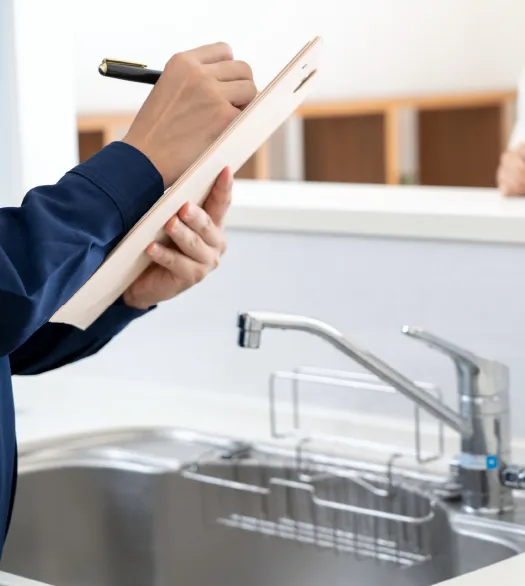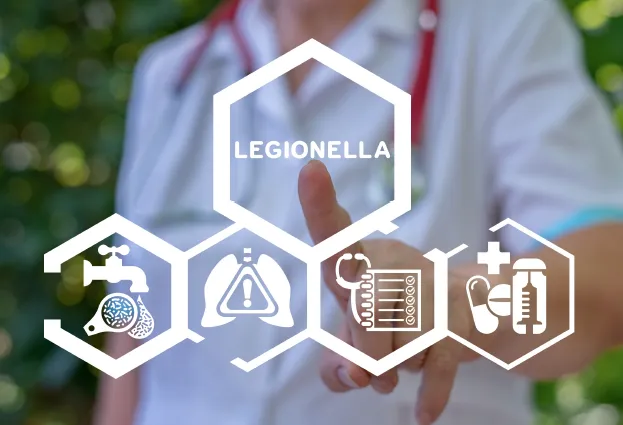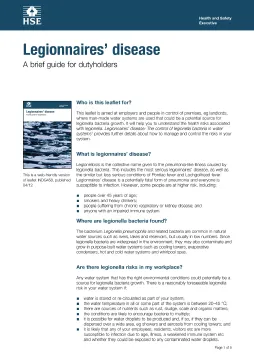Understanding Legionella Water Testing in the UK
Legionella water testing UK serves as a cornerstone in the battle against Legionnaires’ disease. By detecting the presence of Legionella bacteria in water systems, testing enables proactive measures to be taken, preventing outbreaks and safeguarding public health.
In the UK, Legionella water testing follows stringent protocols established by regulatory bodies and industry standards. Sampling techniques, frequency of testing, and analysis procedures are meticulously outlined to ensure accurate results and compliance with legislation.
At Albion Water Treatment, we go beyond mere detection; our Legionella water testing services offer comprehensive analysis and actionable insights. From assessing risk levels to identifying potential sources of contamination, our testing protocols are tailored to each client’s specific needs.
Interpreting Legionella water test results requires expertise and experience. Our team of qualified professionals analyses test findings, providing clear interpretations and practical recommendations for effective Legionella control strategies.
At Albion Water Treatment, we integrate testing results into holistic Legionella prevention strategies, encompassing water treatment, system maintenance, and regulatory compliance to mitigate risks effectively.
What Systems Require Water Testing In The UK?
Legionella water testing is essential to ensure compliance and safety in various water systems prone to Legionella bacteria growth. Understanding where testing is needed is crucial for mitigating risks effectively.
Here are the key water systems that should undergo Legionella testing in the UK:
- Cooling Towers: These systems, prevalent in various industries across the UK, create an ideal environment for Legionella growth due to warm water and air circulation.
- Hot and Cold Water Systems: Found in both residential and commercial properties, these systems include showers, taps, and water tanks. Legionella can thrive if water temperatures allow bacterial growth or if water stagnates.
- Spa Pools and Hot Tubs: Popular in leisure facilities and hotels, spa pools and hot tubs require stringent Legionella testing due to their warm water environments, which can become breeding grounds for bacteria.
- Evaporative Condensers: Commonly used in air conditioning and refrigeration systems in various UK buildings, evaporative condensers provide conditions suitable for Legionella growth.
- Humidifiers: Industrial and domestic humidifiers can pose a risk of Legionella contamination if not properly maintained, especially considering their ability to aerosolize water.
- Sprinkler Systems: Ensuring the safety of sprinkler systems in UK buildings is crucial, as stagnant water within them can promote Legionella growth, posing a risk of aerosolization during operation.
- Fountains and Decorative Water Features: These are often found in public spaces throughout the UK. Standing water in these features can provide an environment conducive to Legionella growth if not adequately treated and maintained.
- Dental Unit Water Lines: Dental practices across the UK must ensure regular Legionella testing of water lines to prevent contamination and safeguard patient health.
Conducting a thorough risk assessment is essential for identifying water systems within UK facilities at risk of Legionella contamination. Factors such as water temperature, stagnation, aerosolization potential, and nutrient presence all influence the risk of Legionella growth and transmission.

Legionnaires’ Disease Control and Prevention
Legionnaires’ disease is a severe pneumonia caused by the Legionella bacterium.
People may become infected when they inhale aerosols from a contaminated source.
People can contract the disease from places like hotels, hospitals or offices where the bacteria have colonised the water supply.
You can also be exposed to the bacteria that cause Legionnaires’ disease from things like:
- air conditioning systems and cooling towers
- processes using water sprays or mists
- humidifiers
- spa pools and hot tubs
- taps and showers that are infrequently used
Early symptoms of Legionnaires’ Disease
Early symptoms include muscle aches, tiredness, headaches, dry cough and fever. Sometimes diarrhoea occurs and confusion may develop. Legionnaires’ disease can cause long term health problems. Certain strains of the bacteria may be more dangerous.
Clinically it is a serious condition and has a mortality rate of around 12% of cases so prevention is certainly recommended.
Whilst treatment is available for those who are infected, there are direct duty of care and legal implications for all managers and persons holding responsibility for the health and safety of their employees or the public. Consequently prevention of Legionella should be regarded as an essential task.
Legionella Legislation Your Statutory Obligations as a Duty Holder
As a duty holder, you have a legal duty to carry out a risk assessment to identify and assess whether there is a risk posed by exposure to Legionella from the hot and cold water system or any work associated with it. The following briefly describes the obligations of a building operator or owner.
A Health and Safety Executive (HSE) leaflet briefly defining your Legionella obligations is downloadable from the HSE website. It provides basic common sense advice.
The Health and Safety at Work etc. Act 1974
- Sections 2, 3, 4 and 6 are defined within ACoP L8 as applicable to legionella control. The first 2 sections cover the primary requirements for most operations.
The Management of Health and Safety at Work Regulations 1999 (MHSWR)
- These regulations provide a broad framework for controlling health and safety at work. As well as requiring risk assessments, they also require employers to have access to competent help in applying the provisions of health and safety law; to establish procedures to be followed by any worker if situations presenting serious and imminent danger were to arise; and for co-operation and co-ordination where two or more employers or self-employed persons share a workplace.
The Control of Substances Hazardous to Health Regulations 2002
- Regulations 6, 7, 8, 9 and 12 are particularly relevant to Legionella control.
- Regulation 6, Assessment of the risk to health created by work involving substances hazardous to health, is perhaps the most relevant.
- Legionella bacteria are classified as substances hazardous to health and therefore a Legionella risk assessment can be considered a mandatory requirement in all workplace buildings with water systems.
The Notification of Cooling Towers and Evaporative Condensers Regulations 1992.
- This regulation requires the registration of evaporative cooling devices.
Specific guidance with regard to the control of Legionella bacteria is supplied in the following HSE documents:
- Approved Code of Practice and guidance L8 - Legionnaires’ disease - The control of Legionella bacteria in water systems.
- Legionnaires’ disease - Part 2: The control of Legionella bacteria in hot and cold water systems (HSG274).
These documents can be used as guidance on the tasks and responsibilities that are applicable to the water systems on your site.
Further guidance is available on:
- Control and maintenance of water system affecting Legionnaire’s disease from Health and Safety Executive (HSE)
- Legionella and the prevention of legionellosis from WHO, 2007
- Legionella and other infectious agents in spa-pool systems from Health and Safety Executive (HSE)
Frequently Asked Questions About Legionella Water Testing in UK
We've answered some common questions about what Legionella disease is and how we help businesses detect and prevent contamination. If you have any questions we may have missed feel free to contact us directly.
Legionella is a bacteria found in water systems, posing health risks. Albion Water Treatment offers expert solutions to manage Legionella, safeguarding against Legionnaires' disease.
Collaborating with Albion ensures thorough Legionella testing, identifying potential risks and allowing for proactive measures to mitigate them effectively.
Any organisation, from businesses to landlords, can benefit from Albion's expertise in Legionella management, ensuring compliance and safety in water systems. Some industries we've worked with include but are by no mean limited to pharmaceutical, healthcare, hospitality, and manufacturing.
Albion's specialists assess the risk level of your water systems to determine the optimal testing frequency, providing tailored solutions aligned with regulatory requirements.
Albion utilises advanced testing methods, including culture testing, PCR, and immunoassays, ensuring accurate results and comprehensive analysis of Legionella presence.
Albion boasts accredited experts in water microbiology, offering reliable testing and treatment services tailored to your specific needs, ensuring peace of mind and compliance.
Failing to address Legionella risks can lead to severe consequences, including legal liabilities, reputational damage, and health hazards. Albion's proactive approach mitigates these risks effectively.
In the event of Legionella detection, Albion implements swift and effective measures, including water treatment, system flushing, and comprehensive risk management strategies.
Yes, Albion provides comprehensive reporting and assistance in complying with regulatory requirements, ensuring transparency and accountability in Legionella management.
Absolutely, Albion offers end-to-end Legionella management solutions, including testing, analysis, treatment, and ongoing monitoring, providing a hassle-free experience for clients.

Treatment Strategies
For buildings hot and cold water systems
Using temperature control is a simple yet effective primary first choice.
Water services should be operated at temperatures that prevent Legionella growth:
- Hot water storage cylinders (calorifiers) should store water at 60°C or higher
- Hot water should be distributed at 50°C or higher (thermostatic mixer valves need to be fitted as close as possible to outlets, where a scald risk is identified).
- Cold water should be stored and distributed below 20°C.
A competent person should routinely check, inspect and clean the system, in accordance with the risk assessment.
You must identify ‘sentinel’ outlets (furthest and closest to each tank or cylinder) for monthly checking of the distribution temperatures. You should also check the hot water storage cylinder temperatures every month and cold water tank temperatures at least every six months.

Stagnant water favours Legionella growth. To reduce the risk you should remove dead legs/dead ends in pipe-work, flush out infrequently used outlets (including showerheads and taps) at least weekly and clean and de-scale shower heads and hoses at least quarterly. Cold-water storage tanks should be cleaned periodically and water should be drained from hot water cylinders to check for debris or signs of corrosion.
Design systems to minimise Legionella growth by:
- keeping pipe work as short and direct as possible;
- adequately insulating pipes and tanks;
- using materials that do not encourage the growth of Legionella;
- preventing contamination, e.g. by fitting tanks with lids and insect screens.
Additional controls
Water samples should be analysed for Legionella periodically to demonstrate that bacteria counts are acceptable. The frequency should be determined by level of risk, in accordance with the risk assessment.
Other control systems
Other methods to control Legionella include biocide treatments. AWT favour our proven Chlorolox technology which can safely treat water and reduce Legionella risk.
For any system to remain effective their application will need suitable assessment as part of the overall water treatment programme including proper installation, maintenance and monitoring. AWT offers full service and support for all our dosing and control systems.
AWT design build and install treatment systems for a wide variety of systems including cooling towers and industrial plant using water.















